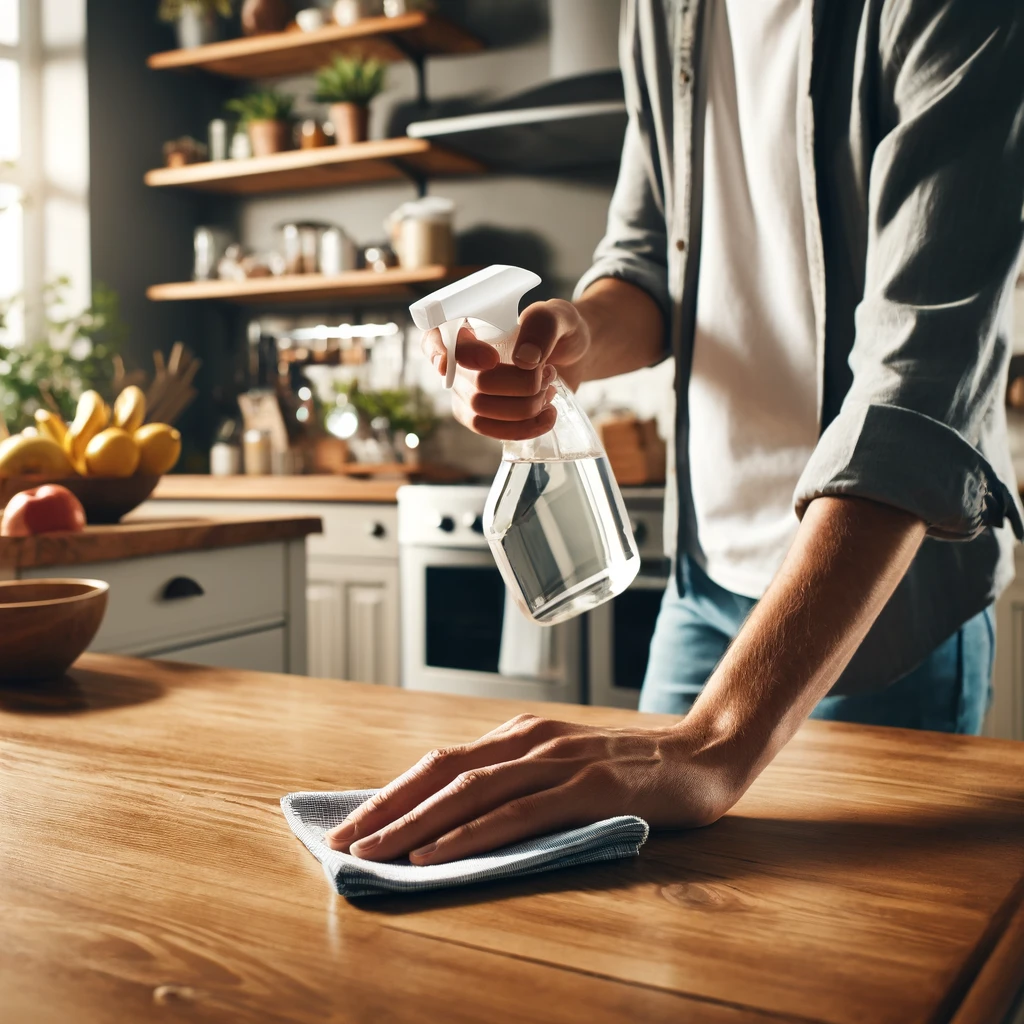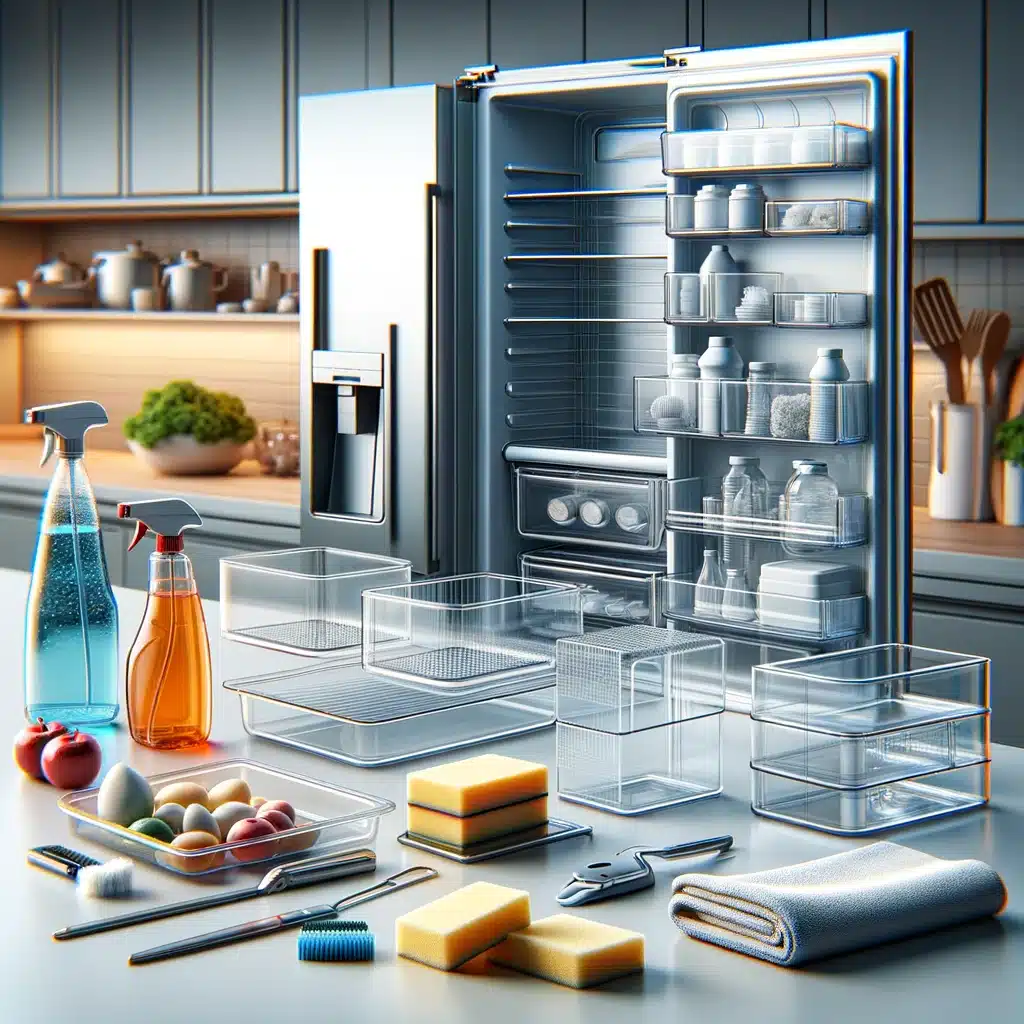How to Clean High-Traffic Areas in 5 Easy Steps
Keeping Clean High-Trafficc areas is essential for maintaining a tidy and welcoming home. These spots, like hallways, entryways, and living rooms, see the most foot traffic and tend to accumulate dirt and grime quickly. Here’s a simple guide to help you clean high-traffic areas effectively in just five easy steps. 1. Gather Your Cleaning Supplies Before you start, make sure you have all the necessary cleaning supplies on hand. For cleaning high-traffic areas, you’ll need: A vacuum cleaner A mop and bucket All-purpose cleaner Microfiber cloths A scrub brush Having everything ready will save you time and make the process smoother. 2. Declutter the Area High-traffic areas often become cluttered with shoes, bags, and other items, making it challenging to keep these spaces clean and organized. Start by removing any objects that don’t belong in the area. This initial step is crucial as it clears the way for a more thorough cleaning and helps you to better see the surfaces that need attention. By decluttering first, you create an environment where cleaning high-traffic areas becomes more manageable and efficient. Whether it’s shoes piled up at the entryway or random items scattered in the hallway, getting rid of this clutter will make a significant difference. Moreover, maintaining a neat space by regularly decluttering helps prevent the accumulation of dust and dirt, which can be more easily overlooked when items are strewn about. A clutter-free area not only looks more inviting but also contributes to a healthier living environment. Once the unnecessary items are removed, you can clean high-traffic areas more effectively, ensuring that every corner is accessible and can be properly cleaned. This proactive approach to decluttering ensures that your high-traffic areas remain tidy and welcoming, making your overall cleaning routine much simpler and more efficient. 3. Vacuum Thoroughly Vacuuming thoroughly is crucial in high-traffic areas as it helps remove dirt, dust, and debris that get tracked in daily. These areas, like entryways and living rooms, tend to collect the most dirt, making regular vacuuming essential. Using a vacuum cleaner with a strong suction and a brush roll is particularly effective in lifting dirt from carpets and rugs, ensuring a deep clean. It’s important to move slowly and make multiple passes over the same spot to pick up as much dirt as possible. This method not only improves the cleanliness of your floors but also helps in maintaining the longevity of your carpets by preventing dirt build-up that can cause wear and tear. Don’t forget to vacuum under furniture and along baseboards, as these areas can harbor dust and dirt that are often overlooked. Moving smaller furniture pieces and getting into these nooks and crannies ensures a more comprehensive clean. High-traffic areas can quickly become hotspots for dust and allergens, so a thorough vacuuming routine helps to create a healthier living environment. Regularly vacuuming these areas also makes subsequent cleaning tasks easier, as there is less dirt to tackle with mopping or wiping down surfaces. By making vacuuming a consistent part of your routine, you can effectively clean high-traffic areas and keep your home looking and feeling fresh. 4. Mop the Floors After vacuuming, it’s time to mop the floors to ensure they are spotless and sanitized. Mopping is especially important for hard surfaces like tile, laminate, or hardwood, as it removes any remaining dust and grime that vacuuming might have missed. Begin by filling your bucket with water and adding an appropriate floor cleaner suitable for the type of flooring you have. Using the right cleaner is crucial to avoid any damage or residue on the floor. Make sure your mop is clean and well-maintained to prevent spreading dirt around rather than removing it. As you mop, be sure to wring out excess water from the mop head to avoid oversaturating the floor, which can cause damage, especially to hardwood and laminate surfaces. For stubborn stains that resist regular mopping, use a scrub brush to gently lift the grime without scratching or harming the floor’s finish. This detailed approach to mopping not only helps to clean high-traffic areas more effectively but also maintains the integrity and appearance of your flooring. Consistent mopping as part of your cleaning routine ensures that high-traffic areas remain hygienic and visually appealing, contributing to a cleaner, more inviting home environment. 5. Wipe Down Surfaces High-traffic areas often have surfaces that collect dust and fingerprints, such as light switches, door handles, and baseboards. These areas are frequently touched and can quickly become hotspots for germs and dirt. To clean high-traffic areas effectively, use a microfiber cloth and an all-purpose cleaner to wipe down these surfaces. Microfiber cloths are particularly effective because they trap dust and dirt rather than spreading it around, ensuring a thorough clean. Spray the cleaner onto the cloth rather than directly on the surface to avoid over-wetting and potential damage to electronic components or delicate finishes. This step not only cleans but also disinfects, contributing to a healthier environment. Regularly wiping down high-touch surfaces helps prevent the spread of germs and keeps your home looking its best. It’s especially important in high-traffic areas where these surfaces see constant use. By maintaining a routine of wiping down these spots, you ensure that your home remains a clean, safe space for everyone. Consistently cleaning high-traffic areas, including these often-overlooked surfaces, enhances the overall cleanliness and hygiene of your living environment, making it more comfortable and inviting for all. Clean High-Traffic With Toronto Shine Cleaning! Cleaning high-traffic areas doesn’t have to be a daunting task. By following these five easy steps, you can keep these busy spots in your home looking fresh and inviting. Regular maintenance is key, so make these steps a part of your weekly cleaning routine. Consistent attention to vacuuming, mopping, wiping down surfaces, and decluttering will ensure that dirt and grime don’t have a chance to build up, keeping your home in top shape. These simple habits can make a significant difference in maintaining a

